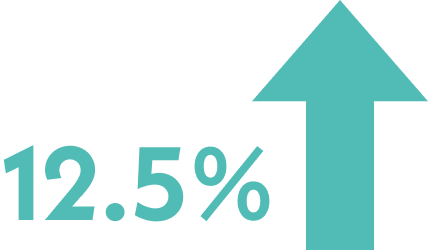Pillar Page – S2
Virtual Orientation:
A Guide for Colleges & Universities
Why orientation matters, the benefits of virtual orientation, and best practices to follow
Table of Contents
- Why does student orientation matter?
- Why offer virtual orientation?
- Best practices for virtual orientation
- Special considerations for various student populations
- What is student onboarding?
- How can technology help with virtual orientation?
Welcoming new students to college lays the foundation for their experience.
Beginning a new chapter of school life is a big deal for students, and can often be overwhelming. To ease the stress that comes with this transition, colleges and universities should aim to make students feel welcome and comfortable, and provide comprehensive information about the resources available to them.
New student orientation offers a first impression that sets the tone for the rest of a student’s experience at school and, ideally, sets up students for success with tools that can help them overcome the inevitable challenges of college.
More than ever before, offering virtual options for new student orientation is critical to making enrollees feel safe, secure, and welcome.
In this guide to virtual orientation for colleges and universities, we’ll discuss why orientation — virtual orientation in particular — is important for student success, and provide some best practices and special considerations.
Why does student orientation matter?
Orientation constitutes a student’s initial impression of their new school, and it’s a key part of the overall first-year university student experience. It also offers a valuable opportunity to preemptively address some of the most common challenges facing first-year university students.
Retention rates in
2020 vs. 2019


A report from the U.S. Department of Education shows that while the overall retention rate for full-time students only decreased slightly from 2019 to 2020, the retention rate for part-time students fell by 3%.
Institutions wondering how to improve retention in college would do well to invest deeply in a first-year orientation program that addresses first-year college student needs and challenges.
Many students don’t realize that assistance (financial aid, academic advising, mental health counseling, food assistance programs, etc.) is available to help them navigate the obstacles of college life. Orientation is vital for providing students with this information so they know where to go for help should they need it — with the proper knowledge and support, they’re more likely to stay enrolled.

Studies have shown online orientation increases retention rates up to 12.5%
Tackling barriers to student success provide students access to:

Studies show that food insecurity — a lack of consistent access to enough food for an active, healthy life — affects more than half of students.

Being able to stay warm, safe, and housed is a basic human right, but more than 50% of students face housing insecurity.
Additionally, the COVID-19 pandemic resulted in higher levels of housing insecurity, which disproportionately affects students of color — especially Black, Pacific Islander, and Indigenous students.

Student debt is at an all-time high, and it disproportionately affects women and people of color. Students need support from their school through this financial crisis. This is especially true for Gen Z students, who are experiencing unprecedented stress from school debt.
These and other challenges act as barriers to student success in higher education, often resulting in high stress levels and negative health effects that can impact academic performance and contribute to the high attrition rate of first-year students.
Why offer virtual
orientation?
Early on in the COVID-19 pandemic, many colleges and universities were forced to cobble together remote orientation options to comply with health and safety guidelines. But there are many reasons why institutions should continue offering online new student orientation in perpetuity.
Sometimes, new student orientations are scheduled weeks before school begins, and it’s not possible for everyone to attend.
Those who don’t live nearby can’t always spend the time or money to make the trip before their move-in date. Work schedules may not allow for time off to attend in-person orientation. Vacation plans, limited access to transportation, or illness can also interfere. Additionally, students with disabilities and/or mobility challenges may prefer not to travel to campus unless absolutely necessary.
An online orientation course respects the many life situations that new students are dealing with, and allows them the freedom to join when they’re able.
When built on the right platform, online orientation allows institutions to better track orientation completion, gather feedback, and make improvements.
A University of West Georgia study found that for a small liberal arts university in Pittsburgh, virtual orientation raised student retention rates by 7%, bringing the school’s retention rate up to 95% for the fall 2018 term.
Everyone learns and absorbs information differently. Some students need a quiet environment to retain details. Some might need closed captions, a translator, or the ability to play back videos. Others might need a computer or digital setup to take notes, and some are just more at ease with a digital setup.
Additionally, while one goal of orientation is to help students get to know one another, some people are just not comfortable in large social settings. Remote orientation can ease them in gently so they don’t get overwhelmed.
Whether a student is dealing with health anxiety, is immunocompromised or living with people who are, or simply doesn’t want to risk getting sick, an online orientation course provides an alternative to in-person orientation events.
Best practices for virtual orientation
It’s clear that student orientation is critical for enrollees entering a higher institution, and that remote orientation offers students the flexibility they need to successfully adjust, overcome challenges, and feel warmly welcomed.
The next step? Putting together an outstanding online orientation course. Here’s a checklist of best practices for virtual orientation:
There’s a strong argument to be made for upgrading to an Online Orientation Software over sticking with the Learning Management System Orientation Module already in place. Do research to find out what will best support new students.
Having a game plan for how you’ll ideate, develop, and implement a clear, concise, relevant, and engaging virtual orientation will make things smoother not only for the students joining the online orientation course, but also for employees of the institution.
Use a combination of video, text, visuals, and interactive components to keep students engaged, as well as to acknowledge that there are many learning styles among the student population.
If a virtual orientation is too long, students will likely tune out, not retain details, and feel frustrated that they’ve been asked to devote so much time to it.
To help ensure that students have retained the information provided in the online orientation course, give them a quiz on relevant details. This helps them remember important information and helps you assess how effective your program is, so that you can see exactly where to make improvements.
Ensure your orientation program is representative of campus diversity, with speakers who come from a wide variety of racial backgrounds, ethnicities, cultures, religions, and more. If students see themselves reflected in orientation images, videos, and materials, they’ll feel safer, more welcome, and more inspired that this is, indeed, the place for them.
As discussed earlier in this guide, address obstacles that may arise for students, such as food, housing, and financial insecurities, and normalize these issues for them. Then, make sure students know where and to whom to go for academic advising, counseling, financial aid, housing assistance, diversity groups, technological assistance, extracurricular activities, healthcare, and anything else they may need.
Keep track of completion rates, average pace, and commonly missed quiz questions to measure the success of your orientation program. Gather feedback, too, and implement anything that will make your course more beneficial and useful for students.

Want to learn more about best practices for online orientation?

Special considerations for various student populations
There are certain types of students who stand to benefit most from orientation, so it’s especially important to consider their needs as you create your virtual program. You’ll want to use language that’s inclusive of these students and, if possible, create specific modules that address their unique needs and document all the resources available to them.
Here, we’ll cover five types of students who can greatly benefit from an online orientation course, and what you can do to make their experience as smooth — and helpful — as possible.
Just because transfer students are familiar with college doesn’t mean they can jump right in without guidance. These students still need to know about the processes, requirements, and resources at their new institution — and that’s what orientation is for.
Here are some of the most important transfer student orientation best practices to keep in mind:
- Create a designated transfer student orientation module. If orientation materials address freshmen only, transfer students may feel disregarded.
- Acknowledge that many transfer students may be coming from community college, which is a much different experience than a four-year college.
- Provide detailed information about how to transfer course credits, including course equivalency and submitting the required documentation.
Community college students often have different needs than those attending a four-year university. It’s important to use orientation to communicate that your institution understands those needs and has resources available to address them.
Community college new student orientation best practices include:
- Keep part-time students in mind. The National Center for Education Statistics reports that 63% of community college students attend part-time — often because they’re also working full-time jobs. This makes online orientation for community college particularly important, as these students may not have the free time to attend a scheduled, in-person orientation session.
- Acknowledge that not everyone is on the same path. Some students may want a two-year certificate, while others plan to transfer to a four-year university. Clearly explain these options and how to get there.
- Place particular emphasis on advising. Many community college students are unsure about their desired major or career path, and can benefit from discussing their options with an academic advisor or career counselor.
- Offer detailed information about financial aid. Pell Grants, for example, cover more expenses for community college students than for those attending other types of institutions.
About one in eight U.S. college students have at least one disability. Supporting these students and making their experience a priority starts with orientation. Here are some best practices to follow:
- Provide clear, up-to-date information about accommodations like assistive technology, sign language interpreters, large-print course materials, and more.
- Inform students about any on-campus resources, such as disability service centers, tutoring services for those with learning disabilities, and student health centers.
- Ensure your online orientation program and other online resources are web accessible.
Providing a thorough orientation process for international students is crucial in helping them face a number of potential challenges, like language barriers and culture shock. Any institution that is committed to recruiting and retaining international students will invest in creating orientation modules specifically for this group.
International student orientation best practices include:
- Provide orientation materials in as many languages as possible to better support ESL learners.
- When it comes to online orientation for international students, create modules that address culture shock by providing basic cultural tips.
- Recommend ways to make friends and find community, such as attending events or joining a multicultural or foreign language club.
- Offer resources for practical needs like student visa renewal and securing housing and dining over holiday breaks if they’re unable to return home.
Undocumented immigrant students make up about 2% of all students enrolled in U.S. higher education, according to the Presidents’ Alliance on Higher Education and Immigration. That’s more than 450,000 students.
Institutions can support undocumented students by creating specific orientation materials to address their needs. Best practices include:
- Provide orientation materials in as many languages as possible to better support ESL learners (though many undocumented students are fluent in English, some are not).
- Provide resources on topics like Deferred Action for Childhood Arrivals (DACA), free legal resources, financial resources, requesting emergency funds, and applying for scholarships.
- Offer mental health and wellness resources. A UCLA study shows that 75% of undocumented college students have higher anxiety levels than those of students who are legal residents (often because they worry about being detained or deported).
What is student onboarding?
Student orientation is just one aspect of the greater onboarding process, which continues well after an online orientation course. The college student onboarding process begins when an enrollee is welcomed to school, and it ends when a student successfully integrates into their campus community.
Technology can help with onboarding students in higher education. Comevo’s mobile-friendly, ADA-compliant software and platforms offer a seamless ways for students to complete virtual orientation, check off everything on their onboarding checklist, engage with staff, and get comfortable with campus life.
New student onboarding is a continuous, individualized journey in higher education. Here are some items you may want to include in your student onboarding checklist:
Investing in technology that can improve academic advising makes it much easier to track and communicate with a larger number of students and ensure outreach campaigns are initiated.
A student ID isn’t just necessary for navigating around campus; it’s also a rite of passage that helps enrollees feel like they’re officially a college student.
here’s often quite a lot of administrative work that goes into the student onboarding process, so be sure to offer resources and checkpoints along the way for necessary paperwork (e.g. academic honesty agreement, transfer credit request form, on-campus employment application).
Becoming comfortable with campus life takes time. It can be helpful to remind students to visit key locations (e.g. library, bookstore, student services center) to become more familiar with their environment.
Luckily, technology like student onboarding software can help streamline the onboarding process for both students and administrative staff.
Comevo’s Advance™ Checklist, for example, provides step-by-step new student checklists, encourages community engagement, and facilitates ongoing communication as students get acquainted with their college experience.
The mobile-friendly, ADA-compliant platform also makes it easy for schools to track the student onboarding process, including online orientation completion. Administrators can add hyperlinks, customize checklists for different student populations, and connect to other Comevo tools.
How can technology help with virtual orientation?
Student orientation programs — and the overall student onboarding process — are vital for welcoming students into a new environment and helping them feel comfortable and secure, as well as for boosting retention and setting up students for success so they can meet their goals.
“Digital tools can help institutions establish trust with incoming students by demonstrating that all types of learning and all types of students are welcome and embraced.”
Providing options for online orientation is important for establishing trust with new students and ensuring that everyone has access to materials that will help them thrive in college. Keeping in mind virtual orientation best practices and special considerations for groups of students who can greatly benefit from remote options — such as international, transfer, and undocumented students, as well as students with disabilities — is likewise critical to successful student onboarding.
Creating specific orientation modules for various student populations provides everyone with resources and information specific to their needs, along with the ability to complete it all at their own pace.
Technology like Comevo’s Launch™ Online Orientation and Training Software empowers institutions to create accessible, personalized orientation experiences that provides students with all the information they need to succeed on their college journey.
- Easy to implement and update.
Administrators can update and change content without relying on the IT department. - Compatible with a variety of content.
Add text, videos, images, pdf documents, and quizzes to accommodate different learning styles. - Convenient for students.
If in-person orientation doesn’t fit into their schedule, students can access the orientation program 24/7 with Comevo. - Always available for review.
30% of students go back to review the content again after initial orientation.


